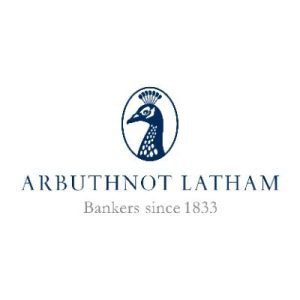Arbuthnot Banking Group Plc (LON:ARBB) is the topic of conversation when Hardman and Co’s Analyst Mark Thomas caught up with DirectorsTalk for an exclusive interview.
Q1: You called your recent note on Arbuthnot Banking Group “Resilience into the storm”. What can you tell us about it?
A1: To be resilient in an economic storm, a bank needs three things – low-risk assets, strong capital and surplus deposits. ABG has all three. At end-2019, 55% of loans were in the private bank (significantly secured on sub-60% LTV residential properties) or the acquired mortgage book. Just 1.5% of the commercial loan book was on 80%+ loan to value (LTV). The equity-to-assets ratio was 8%, and the total capital ratio 17.3%. The regulators have reduced capital buffers – we estimate ABG has ca.£60m of surplus capital. There is surplus liquidity, with deposits of £2.1bn and loans of £1.6bn. ABG’s confidence in being resilient into the storm was reflected when it announced an increased dividend, but this was subsequently withdrawn when the PRA issued market “guidance” for banks not to pay dividends in 2020.
Q2: It is a bit historical, but can you give us some details on the 2019 results?
A2: Underlying PBT was £5.8m, vs. £4.4m in 2018 (restated). Income was up 7%. Impairments saw a net release in 2H. In a private bank, impairments and recoveries are always very lumpy, and what we saw in 2019 was a review of the assumptions on commercial lending to use market-wide data, rather than the historical and very small ABG book. The FY charge was £867k, vs. £2.7m. Despite heavy investment, costs rose 8%, only 1% ahead of income. Loans were up 31% to £1.6bn. Deposits increased 22% to £2.1bn. Assets under Management (AUM) rose 12%. All of these trends were a continuation of the strategy we had seen before, and there were no real surprises, apart from the impairment.
Q3: The outlook post COVID-19 is obviously of great interest. What can you tell us about that?
A3: There are too many moving parts to rely on single projections. We have introduced a range of scenarios. Our central case is zero profit in 2020, reflecting margin pressure following base-rate cuts and COVID-related losses. The upside scenario profit is £6m. The extended economic downturn scenario is a £15m loss.
Q4: You said a bank needs low-risk assets to be resilient into a storm. What can you tell us about ABG?
A4: Non-performing loans (NPLs) and provisions both improved in 2019. Measured against book, both are around 2016 levels and well below the levels of 2013-14. The vast majority of the book is on Stage 1 under IFRS9, which is the lowest-risk category – so ABG starts from a good place. In our note, we explore what security is held when things deteriorate from here. The highest-risk Stage 3 loans in the private bank have significant real estate cover and often personal guarantees. In the mortgage book, three quarters of the acquired book has longer than a 10-year record of repayments, even where loans have high LTVs. Overall residential mortgages are about two thirds of the book. When we get to the situation of customers being in difficulties, we expect ABG to manage them over the long term, rather than rush into selling assets into distressed markets. It can only do this because ABG has balance sheet strength to hold repossessed assets for many years to sell into more favourable markets. Even in our downside scenario, we believe ABG will have ca.£40m of surplus capital at end-2021 (against its current market cap of ca.£130m).
Q5: And what about surplus liquidity?
A5: ABG has always been conservatively run in terms of liquidity. This has continued in recent years, with deposits in 2019 at 1.3x the level of loans, and the nominal surplus remaining at ca.£0.5bn. We believe investors should focus not only on the quantum of deposits, but also on their diversity and maturity profile. As can be seen in the in our report, ABG raises deposits across a whole range of customers, and can dip in and out of whichever market gives it the prices, volumes and terms required (a capability enhanced by the Arbuthnot Direct launch). While it still has a majority of deposits in current and demand accounts, the fixed-term element is now 41% of deposits.
Q6: Any comment on Arbuthnot Banking Group’s valuation?
A6: We have introduced a range of forecast scenarios, and we also have a number of valuation methodologies. These are all detailed in our note. Our central case has a range of 871p to 1,912p, and even the downside scenario has a low methodology of 782p and a high of 1,424p. These can be compared with a current NAV of 1,364p and the share price of 890p. Many profitable and growing banks have historically traded above book value through the medium term.


